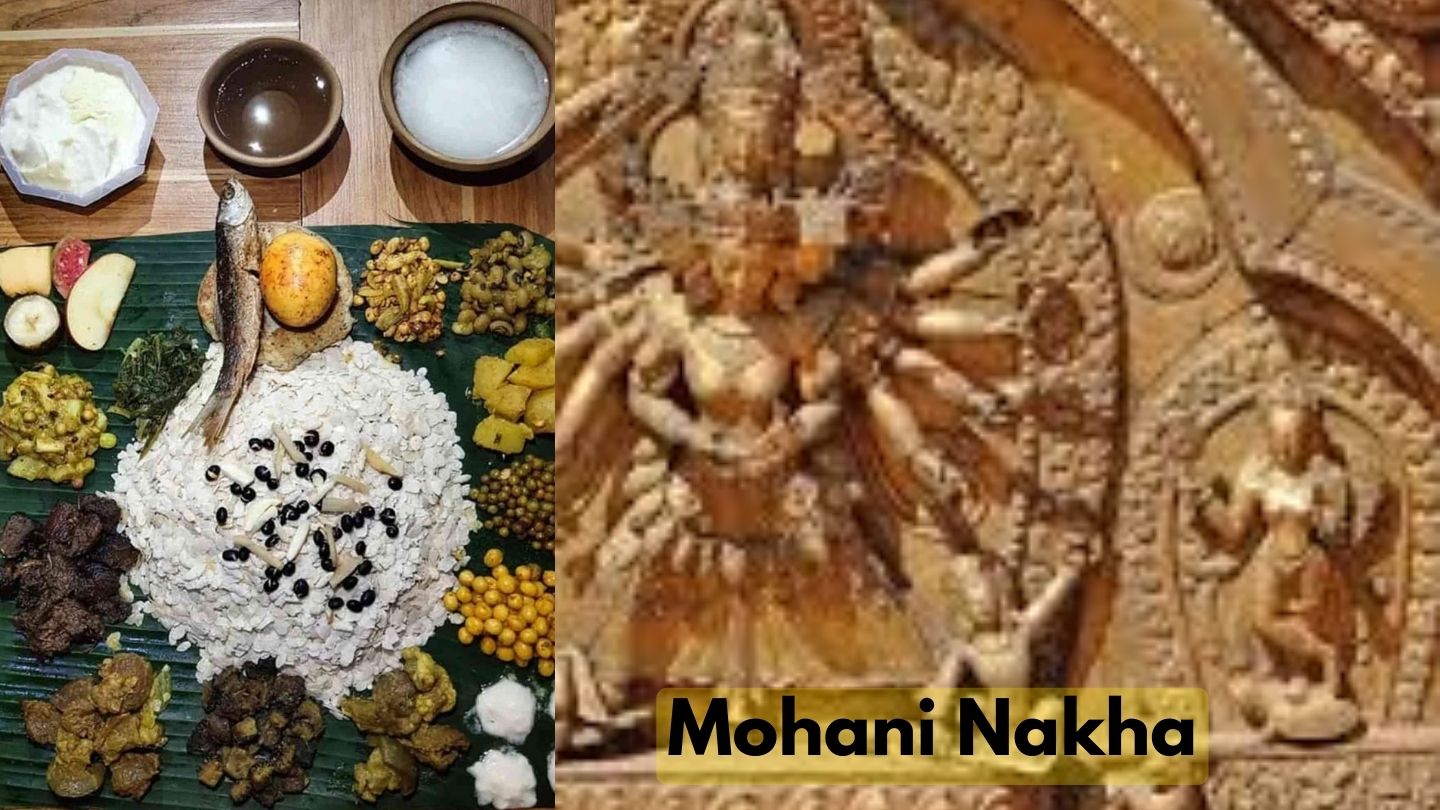
Mohani Nakha: Newar Community’s Grand Festival
The Newar community celebrates Mohani Nakha as their version of Dashain. Traditionally, the community does not observe the Fulpati ritual, though in recent times, some have started the practice for social conformity.
Cultural expert Purushottam Lochan Shrestha explains that Mohani Nakha derives its name from “Mohani Sinha,” a special black tika prepared through Vajrayana Buddhist tantric rituals.
Beginning of Mohani Nakha
According to Shrestha, nothing specific is performed on Saptami. The tradition of Fulpati started in Nepal Mandal after King Prithvi Narayan Shah’s conquest of Kathmandu. Like Dashain, which begins with Ghatasthapana on Ashwin Pratipada, Mohani Nakha also begins on the same day.
Similar to Hindus planting jamara at home on Ghatasthapana, both Hindu and Buddhist Newars plant jamara, known as “Nala Swonegu,” in the Agam house on Ashwin Pratipada.
Shrestha highlights that Mohani Nakha is the biggest festival of the Newar community. Its main events fall on Ashtami, Navami, and Dashami, marked by Kulchi Bhway (one-pathi feast), Syakhu Tyakhu (sacrifice day), and Chala (Vijayadashami). From Dashami until the full moon, families host “Nakhatya” feasts for daughters, sons-in-law, and sisters.
Kulchi Bhway
Cultural expert Om Dhaubadel notes that Newars celebrate Mohani Nakha instead of Dashain. On Ashtami, households host Kulchi Bhway, where all members of the lineage sit in order of seniority to share a feast.
He explains that on Ashtami, locals gather early in the morning to sacrifice a buffalo, and all family members gather to eat together. “Kulchi” or “Kuchi” refers to close kin and lineage.
On this day, the jamara room is also offered “Thaypin Swonegu,” where a small clay pot filled with alcohol and topped with a clay saucer and a piece of buffalo meat is kept as an offering. Traditionally, the feast is served on banana leaves, and it is customary to eat two mana of beaten rice. The presence of the entire lineage is important for this ritual.
Syakhu Tyakhu
Navami is known as Syakhu Tyakhu in the Newar community and is regarded as the day of sacrifice. People worship their deities and offer sacrifices. The Thaypincha established on Kulchi Bhway is also ritually worshipped, and Mohani Sinha (black tika) is prepared following tantric procedures.
This black tika is applied on the forehead above the red and yellow tikas, as it is considered spiritually significant. It is believed to bring power and protection. The name Mohani Nakha is said to come from this Mohani Sinha.
Mohani Sinha and Chala
Dashami is the main day of Mohani Nakha, marked by “Swa Kwakyaegu” or “Chala Kwakyaegu.” The tools worshipped on Navami are worshipped again and then removed from the altar.
The eldest member of the family applies Bhuisinha (vermilion tika) and Mohani Sinha (black tika) on the foreheads of all family members, distributes jamara and prasad, and ties “Kwacha,” a red and white sacred thread, around their necks.
Families then share a feast with alcohol and roasted meat as part of the ritual meal.
Cultural expert Jagman Gurung states that Mohani Nakha is closely linked to the black tika. He explains that the Newar tradition is rooted in tantra, and black and vermilion tikas are believed to provide spiritual power and protection. The black tika, made from the soot of a lamp offered to Goddess Durga, is believed to ward off evil spirits, illnesses, and obstacles.
This is why the Newar community refers to Dashain as Mohani Nakha in the Nepal Bhasa language.
Festival

